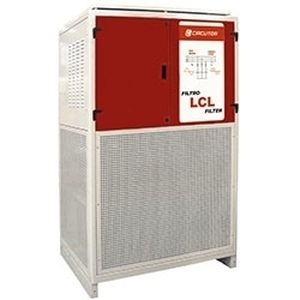
- Company
- Products
- Catalogs
- News & Trends
- Exhibitions
Three-phase harmonic filter reactor LR-LRB series

Add to favorites
Compare this product
Characteristics
- Other characteristics
- three-phase
Description
The motor speed regulation equipment, frequency variators, UPS units, etc. generate alterations in the network, which affect other loads in the installation of the operation of the equipment.
The LR / LRB reactors connected to the input on the network side of the equipment can attenuate voltage peaks and reduce the harmonic distortion generated by the power electronics. The LR / LRB Reactors for filtering can reduce the current harmonics in any converter from 40... 50 % to values around 20 %. In addition, they reduce the shortcircuit current and increase the safety of the converter's semi-conductors. When installed on the motor side, they can attenuate harmonic frequencies caused during switching operations.
Low-powered reactors, LR type, are built with plates with low losses and are coiled with copper wire. The connection is achieved with the adequate terminals.
In the case of higher currents, LRB reactors are used, with a magnetic plate nucleus and multiple steel cores, which offer excellent characteristics and a low loss ratio. Copper band coils (or aluminium band, on demand). The connections run through a plate.
Both LR and LRB type reactors have a vacuum varnish sealing to increase the insulation, providing a greater mechanical resistance and reduce the level of noise
Applications
The reactors of the LR / LRB series are prepared and can be used on the network and motor sides. They attenuate micro-drops and peaks during the initial connection and switching operations, and they reduce the rate of harmonics from the network current
Catalogs
No catalogs are available for this product.
See all of CIRCUTOR‘s catalogsRelated Searches
- Battery charger
- Charging post
- Electric vehicle battery charger
- Electric vehicle charging post
- Single-phase battery charger
- Wall-mount battery charger
- Voltage transducer
- DC charging post
- AC charging post
- DIN rail voltage transducer
- Outdoor charging post
- Harmonic filter reactor
- Three-phase harmonic filter reactor
- Power factor regulator
- Multi-parameter voltage transducer
- Single-phase voltage transducer
- Electronic power factor regulator
- Power factor power factor regulator
- Automatic power factor regulator
- Power factor monitor
*Prices are pre-tax. They exclude delivery charges and customs duties and do not include additional charges for installation or activation options. Prices are indicative only and may vary by country, with changes to the cost of raw materials and exchange rates.






